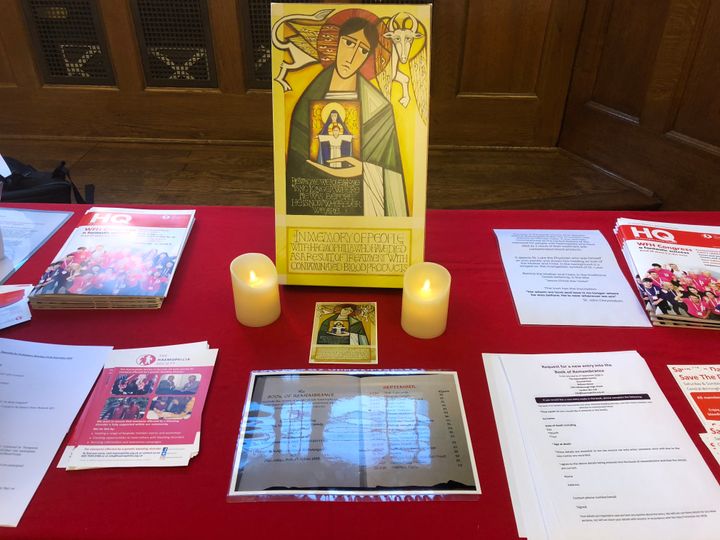The NHS should test “every single person” in the UK for the hepatitis C virus to find potentially thousands of unidentified victims of the contaminated blood scandal, a public inquiry into the treatment disaster has heard.
People who were infected with the liver-wasting virus through the notorious health scandal called on Government to roll-out an urgent testing programme, saying anyone who received blood transfusions or blood products prior to 1991 may be at risk of having contracted the virus.
During the third day of preliminary hearings in the Infected Blood Inquiry, Caz Challis, who was infected with hep C through NHS treatment, said: “We know there are thousands of people out there, far more than the official estimates, who will never find out they have hepatitis until it is too late for them.
“I would like to see the NHS testing every single person for hepatitis C, it’s not an expensive test, and then quickly treating those who test positive. This is the only way we will find them all.”
Many thousands of people who underwent blood transfusions during routine dental treatment and medical procedures, and mothers given blood following childbirth, were infected with the virus through contaminated blood before screening was introduced in September 1991, the inquiry heard.
But as many as tens of thousands may not yet know they have the virus.
“We know the look-back exercise was woefully inadequate, and we know that people are still finding out that they were infected with contaminated blood decades after the event, causing extreme trauma and meaning that many find out they have hepatitis C when it is already too late to save them from complications and liver damage,” Challis said.

The hep C virus causes damage to the liver and is known as the ‘silent killer’ as it is often not detected until it has caused significant liver cirrhosis or cancer.
The blood victim explained she had contracted the virus during treatment for cancer in early 1992. Although she was later cured of hep C when she took part in a clinical trial in 2015, she said: “By then I had already lost my quality of life and most of my working years, including my career as a therapeutic counsellor.”
“I still have chronic fatigue,” she continued. “I’ve been humiliated time and time again, like many others, having to jump through hoops at Work Capability Assessments trying to prove that I simply cannot work due to the chronic fatigue and other long-term effects of my illness and treatments, even though I may look fine.”
She said the government has pledged to eliminate hep C by 2025 but that would never happen unless everyone affected is found, diagnosed and treated.
“I hope the inquiry will consider these recommendations in order for the tens of thousands who are unfound to be found and tested and treated,” she said.
The demands for wide-scale testing were echoed by The Hepatitis C Trust, as Samantha May gave the charity’s opening statement to the inquiry.
She called for the public profile of hep C to be raised and for anyone who was given blood before 1991 to go and get tested.
“Unfortunately for many, finding out too late left people with no option for treatment or lifestyle changes to slow down or prevent the devastating potential problems having hepatitis C can cause,” she said.
The Department of Health (DoH) also gave its opening statement to the Infected Blood Inquiry on the final day of preliminary hearings on Wednesday - and expressed “sorrow and regret” over the scandal.
Eleanor Grey QC, representing the DoH, said: “Things happened that should not have happened, and so, on behalf of my clients, I say unreservedly that we are sorry.
“We are sorry that this should be so, that this should have happened when it should not. This is the beginning of a journey to uncover exactly what happened, and why.”
She said DoH welcomed the public inquiry and was fully committed to co-operating and assisting it. The QC also acknowledged that there may have been a cover-up over the scandal.
“There have been eloquent statements about breaches of trust experienced, as well as many reminders of what may, at worst, have been a cover-up, or, at best, a lack of candour about past events,” she said. “There has been repeated mention of the destruction of documents, both government papers and medical records.
“Standing here today, I do not seek to comment upon or to respond to those statements, or to that legacy of distress and distrust. That will be a process over the months that will follow these hearings, as your Inquiry investigates these matters.”
Earlier in the day, the inquiry was shown letters written by former prime ministers Margaret Thatcher and John Major relating to the health disaster.
Raymond Bradley, representing the Haemophilia Society, said they showed the government had “abdicated its responsibility to do the right thing”.
Chair of the Infected Blood Inquiry, retired judge Sir Brian Langstaff, closed the proceedings, saying to all those infected and affected by contaminated blood that he was determined the inquiry should “get the answers that you deserve” adding: “I intend to do my very best to make sure that it does.”
The preliminary hearings took place from Monday to Wednesday this week and comes before the full Infected Blood Inquiry, which is expected to re-open on April 30 next year and continue until at least 2020.
It will explore how thousands of people came to be infected with HIV or hepatitis C through the use of infected blood products by the NHS in the 1970s and 1980s.
Some of those were haemophiliacs being treated with blood factor concentrates to replace blood clotting factors not present in their blood. Others were infected with hepatitis C through blood transfusions and some are spouses or partners who caught infections unwittingly from their partners.
So far, an estimated 3,000 people have lost their lives to the disaster and died from Aids or hepatitis C contracted from the infected blood products.

